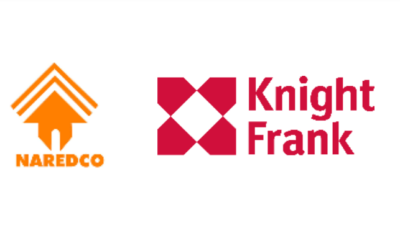News
India’s luxury homes market: the plot thickens: JLL


The following is the report by Ashwinder Raj Singh, CEO – Residential Services, JLL India
There is no denying that the Indian real estate market may not be showing the kind of growth that was expected of it. However, the luxury homes segment is in fact surpassing expectations, which were modest at best this year. A quick look at how luxury housing in India has evolved is in order.
Luxury home buyers in the India of yesteryears were content with an address to boast of, along with whatever additional facilities money could buy. However, times have changed; more and more Indians are now travelling abroad regularly, and getting a taste of what the high life means in other countries. Consequently, their expectations now extend quite a bit beyond just a fancy town-side address. Though the address is still important, luxury home buyers now also expect to buy into a lifestyle that, by definition, only a few in the world can afford to have.
Super Luxury
When it comes to the good life, India’s richest will no longer compromise. Apart from an address that will make others turn green with envy, they want private gymnasiums, swimming pools and gardens, complete home automation, interiors based on Mediterranean or Italian architecture, and home security advanced enough to put the CIA to shame.
Whether or not half of the facilities and technological embellishments they seek are available in the country or not is immaterial – today’s Indian luxury home buyers are willing and able to pay for having them imported, and builders are happy to comply. The desire to stand out and be ‘a cut above the rest’ is creating a demand for super-luxurious homes wherein price is not a constraint.
Such homes have now earned the distinct new moniker of ‘super luxury’, or luxury with no limits. They carry varying price tags across cities:
· Mumbai: Rs. 40 to 100 crore
· Delhi: Rs. 40 to 100 crore
· Bangalore: Rs. 2 to 6 crore
· Chennai: Rs. 7 to 10 crore
· Pune: Rs. 2 to 6 crore
· Hyderabad: Rs. 1 to 5 crore
· Kolkata: Rs. 1 to 5 crore
Affordable Luxury
The luxury residential market in India is not solely targeted at the super-rich. India is a massive country, with a correspondingly broad bandwidth of budget-led sub-categories for luxury homes. Among these, affordable luxury is probably the most interesting – largely because though it appears to be a contradiction in terms, it works very well indeed.
The affordable luxury homes segment in India is about a somewhat diluted but nevertheless real luxury experience available to middle-to-upper middle class buyers. We are still talking about swimming pools, clubhouses, gymnasiums, etc., but these come in the form of shared amenities. The ‘a class above’ ethos still comes through, but the residents of such affordable luxury projects are definitely not rubbing shoulders with the city’s richest and most influential people at ‘snob value’ addresses.
Rather, they enjoy the company of their peers from fairly high-salaried professions, in locations where their money can buy more space. Another interesting aspect of the affordable luxury segment is that developers who build such projects often shoulder the additional responsibility of introducing the whole concept of luxury to buyers who do not have any prior exposure to it.
In the considerably rarefied stratosphere of super-luxury, everything takes place at a more languid pace befitting of the ‘idle rich’ ethos. Exclusive super-luxury homes take longer to be built and also to be sold. This is a high investment arena wherein exclusive customizations are the norm, and both developers and buyers take their time to ensure that the deal results in complete satisfaction to all involved.
In affordable luxury, sales in this segment happen fairly quickly thanks to the less exuberant price tags. Again, price tags for such homes vary across the major cities:
· Mumbai: Rs. 15 to 25 crore
· Delhi: Rs. 10 to 20 crore
· Bangalore: Rs. 0.60 crore to 1 crore
· Chennai: Rs. 2 to 5 crore
· Pune: Rs. 1 to 2 crore
· Hyderabad: Rs. 0.8 crore to 2 crore
· Kolkata: Rs. 0.60 crore to 1 crore
Branded Homes
Most large Indian developers come from a background of catering to the mass market for several decades. In other words, they have no expertise in the super-luxury homes segment because they have not ‘done’ luxury before. A preferred shortcut to experience under such circumstances is partnership with a global luxury brand. Apart from the knowhow, such brands also bring with them an aspirational value that immediately connects with the super-rich. The experience/expertise/brand equity advantage inherent in associating with major brands gives a developer’s luxury project an extra edge.
Buyers into ‘branded’ super-luxury homes get to take a shortcut, too. As far as they are concerned, they are buying instant prestige with an exotic label at a special location, and an international lifestyle right here in India.
Despite the fact that the competition in this segment is heating up, branded luxury homes are a profitable venture for builders, as the returns are enormous when compared to ‘baseline’ luxury or affordable luxury housing projects. Branded luxury homes are especially in vogue with NRIs and PIO HNI investors, who prefer such properties for the simple reason that they get an assurance of the quality of services which they are used to in their adopted countries. Also, with the backing of a well-known brand, they can expect better returns on their investments which are better than the prevailing market rates.
Branded homes come with price tags eminently befitting their ultra-exclusive nature:
· Mumbai: Rs. 15 to 25 crore
· Delhi: Rs. 12 to 20 crore
· Bangalore: Rs. 2 to 4 crore
· Chennai: Rs. 2 to 5 crore
· Pune: Rs. 3 to 5 crore
· Hyderabad: Rs. 2 to 4 crore
· Kolkata: Rs. 1 to 3 crore
To Summarise
The concept of luxury homes in India is becoming more democratic, and striving hard to have relevance to a wider cross-section of the population without losing its intrinsic ‘upper crust’ appeal’. How is that working out? Actually, not so badly at all. What has not changed is the fact that the luxury homes segment is where everyone – developers and investors alike – can look at fat profit margins (a fact which more than makes up for the slower sales). The stakes for developers are definitely high, but not as high as one may assume. Very few developers actually rely exclusively on luxury – most of them are very active in mid-segment housing, as well. In the final analysis – for players who are into luxury housing for the long haul, very little can really go wrong and a lot tends to go…well, better than just right.
-



 News3 weeks ago
News3 weeks agoKW Delhi 6 Mall Onboards New Brands
-



 News4 weeks ago
News4 weeks agoManasum Senior Living Launches IKIGAI GOA, A Senior Living Community in North Goa, in collaboration with Prescon Homes
-



 News3 weeks ago
News3 weeks agoCommercial Realty Gets Tech Savvy: Fast Construction, Enhanced Convenience
-



 News3 weeks ago
News3 weeks agoGodrej Properties Sells Rs 3k cr+ Homes of Godrej Zenith, Gurugram, within 3 days
-



 News4 weeks ago
News4 weeks agoBridging India Divide: Top 5 Tier- 2 Cities to Focus On
-



 News4 weeks ago
News4 weeks agoMultipoint Connection – A Definite Boon
-



 News3 weeks ago
News3 weeks agoRBI’s Status Quo on Key Policy Rates to Help Maintain the Real Estate Growth Momentum, Say Industry Stalwarts
-



 News1 week ago
News1 week agoOlive Announces Dhruv Kalro as Co-Founder




























